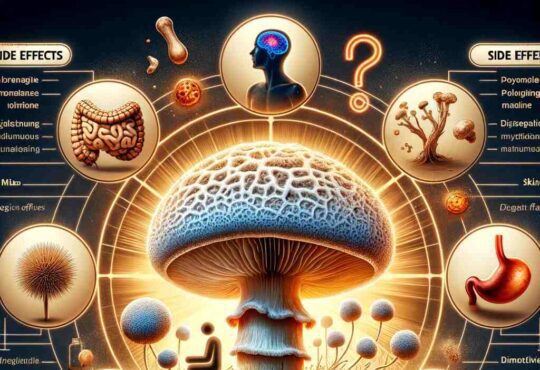Pediatric Physical Therapy: Transforming Weak Children’s Lives through Physical Therapy
I. Introduction
In this article, we will explore the essential role of pediatric physical therapy in empowering weak children and transforming their lives.
By understanding the core concepts and relevance of this topic, we can appreciate the profound impact it has on improving the physical abilities and overall well-being of these children.
II. Understanding Weakness in Children
- Weakness in children can manifest in various ways, including motor impairments, muscle tone issues, coordination difficulties, and more.
- It is crucial to differentiate between these types of weakness to effectively address each child’s specific needs.
- Identifying the causes and challenges associated with weakness in children allows healthcare professionals to devise appropriate interventions.
- Astonishing statistics reveal the prevalence of weakness in the pediatric population, reinforcing the urgency to address this issue.


III. The Role of Pediatric Physical Therapy
- Pediatric Physical therapy focuses on improving the physical function and quality of life of weak children.
- With the primary objectives of enhancing strength, mobility, coordination, and independence, this specialized therapy unlocks the potential within these children.
- Physical therapists tailor treatment plans to cater to the unique needs of each weak child, ensuring personalized care.
- Collaboration between physical therapists and other healthcare professionals, such as occupational therapists and speech therapists, maximizes the effectiveness of treatment.
IV. Assessing Weak Children’s Abilities
- Comprehensive evaluation techniques, incorporating both physical and neurological assessments, provide valuable insights into a child’s abilities and limitations.
- Early diagnosis plays a pivotal role in initiating timely interventions and facilitating better outcomes for weak children.
- Alongside physical abilities, mental and emotional aspects are also assessed to provide a holistic understanding of the child’s well-being.
V. Therapeutic Approaches in Pediatric Therapy
- Strength training plays a vital role in promoting muscle development and enhancing physical capabilities in weak children.
- Balance and coordination exercises aim to improve motor skills and enhance body control, allowing these children to navigate their environment more effectively.
- Sensory integration therapy optimizes sensory processing, leading to better body awareness and improved overall functioning in weak children.
- Gait training, which focuses on facilitating proper walking patterns and enhancing mobility, forms an integral part of pediatric physical therapy.


VI. Assistive Devices and Adaptive Equipment
- Technology plays a significant role in improving the lives of weak children and empowering their independence.
- An array of innovative assistive devices and adaptive equipment is available to cater to the specific needs of these children, promoting inclusivity and equal opportunities.
- Assistive technology has a profound impact on children’s confidence and enables them to engage in daily activities that were previously challenging.
VII. Family-Centered Care: Involving Parents and Guardians
- Caregivers, such as parents and guardians, play a crucial role in supporting and facilitating a child’s progress in pediatric physical therapy.
- Educating parents about therapeutic interventions and providing guidance on home exercises empowers them to actively participate in their child’s healing journey.
- Collaborative decision-making, where therapists and parents work together, ensures that realistic goals are set, aligning with the child’s capabilities and potential.
VIII. Overcoming Challenges and Maximizing Progress
- Pediatric physical therapy may encounter common roadblocks such as lack of motivation and consistent participation.
- Strategies to encourage children’s engagement and maintain their motivation are vital for maximizing their progress.
- By consistently tracking progress and adjusting treatment plans accordingly, therapists can ensure optimal outcomes for weak children.


IX. Success Stories: Transforming Lives through Physical Therapy
- Numerous inspiring success stories illustrate how pediatric physical therapy has bought about remarkable progress and surpassed expectations for weak children.
- Real-life examples showcase the tangible impact that physical therapy can have on every aspect of a child’s life, from physical abilities to emotional well-being.
- Testimonials from parents, therapists, and experts in the field further emphasize the transformative power of pediatric physical therapy.
X. Ensuring Accessibility: Equal Opportunities for All
- It is essential to eliminate barriers that hinder access to quality pediatric physical therapy, ensuring equal opportunities for all weak children.
- Advocacy efforts to promote inclusivity within healthcare systems are crucial for creating an environment that supports and caters to the needs of these children.
- Addressing disparities in availability and affordability of pediatric physical therapy is essential to ensure that every child in need has access to appropriate care.
XI. The Future of Pediatric Therapy
- The field of pediatric therapy is witnessing continuous advancements and innovations.
- Emerging technologies and treatment approaches hold immense promise in improving outcomes for weak children.
- Ongoing research studies further contribute to expanding our knowledge and understanding of how to optimize pediatric physical therapy practices.
- The evolving role of physical therapy in transforming weak children’s futures highlights its indispensable importance in healthcare.
XII. Summary: Unlocking the Full Potential of Weak Children
- Pediatric physical therapy, through its comprehensive and patient-centered approach, unlocks the full potential of weak children.
- By addressing their unique needs and challenges, this form of therapy empowers them to lead fulfilling lives and reach their maximum capabilities.
XIII. Frequently Asked Questions (FAQs)
What is pediatric physical therapy?
Pediatric physical therapy is a specialized area of therapy that aims to improve the physical function and quality of life of children with various weaknesses or impairments.
How early should a child begin physical therapy for weakness?
Early intervention is crucial, and physical therapy can begin as soon as weaknesses or impairments are identified in a child.
Can physical therapy completely eliminate weakness in children?
While physical therapy can significantly improve a child’s strength and abilities, complete elimination of weakness depends on the underlying cause and individual circumstances.
What other disciplines collaborate with pediatric physical therapists?
Pediatric physical therapists often collaborate with other healthcare professionals, such as occupational therapists and speech therapists, to provide comprehensive care for weak children.
Are assistive devices covered by insurance?
Coverage for assistive devices varies depending on insurance plans and policies. It is advisable to consult with insurance providers to understand the extent of coverage available.
How can parents support their child’s progress outside of therapy?
Parents can support their child’s progress by following through with home exercises, encouraging active participation, and maintaining open communication with the physical therapist to ensure continuity of care.






